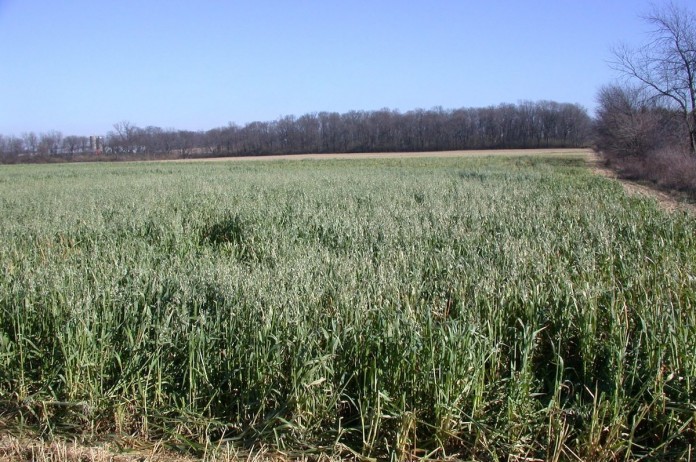At Stark Soil and Water, we spend a lot of time “selling” best management practices. We promote a wide variety of conservation practices, from, rain gardens and compost bins to 750-foot waterways and streamside buffers.
The key to a successful pitch starts with me. If I don’t passionately believe in the practice, the pitch will likely fall on deaf ears. I admit, I’m not anywhere near perfect when it comes to practicing what I preach, but I continue to work at it.
More often than not the source of my passion is the landowners I talk with every day. Their conservation stories and beliefs in its benefits have inspired me to take steps on my five-acre rural/suburban lot, which has furthered strengthened my belief in land stewardship.
Mowing less
Here is what I have done so far. About half the lot is wooded, a former pasture, and the other half is law. Over the past few years, I let about an acre go fallow. When I mow, the deck is all the way up to protect the white clover flower and other short blooming flowers.
My neighbor, who mows his grass three times a week, may call me lazy, but this has helped me spend less time on the “Deere” and more time chasing them.
I was pleasantly surprised at the propagation of native aster, blue-star grass and goldenrod in my fallow area. I did have a few areas of Japanese stiltgrass infestation that I mowed right before going to seed, as well as some multiflora rose. It’s something I will have to keep an eye on this year. Overall the robust and diverse vegetation has attracted pollinators and increased water infiltration.
Similar benefits can be found with a grassed waterway or streamside buffer. Thick vegetation reduces erosion and helps slow down the water so it can infiltrate through the soil profile.
Woodlot improvements
I also started working on a section of woodlot heavily populated with invasive Black Locust and Norway Maple. I felled about 20 trees to allow sunlight to hit the understory and created brush piles to enhance wildlife habitat.
The eastern edge of the lot butts up to a natural gas easement where non-native Japanese knotweed has established. I’ve worked to reduce it to a slight sliver.
I’m torn on knotweed, because I’ve seen a variety of beneficial pollinators loaded on the late summer flowers. It also provided a perfect hedgerow for privacy and is actually quite tasty (rhubarb like), so it stays for now.
Maybe the neighbor is right on my so-called laziness, either way, I can envision the area with brambles and diverse native wildflowers that will bloom throughout the entire season.
Kudzu of the North
I also have been tackling Oriental bittersweet on another section the last couple years. It infested the surrounding properties, and I’ve been late to the party to control it on my property. I plan cut and herbicide treatment before normal leaf out. The woody vines leafs stay green all year long, so a winter treatment is best to minimize impacts to native plants.
No matter what you do on your woodlots, I urge you to obtain and follow your Forest Management Plan so that you can carry out a plan that best suits your vision with the property.
Cover crop experiment
My other project is a food plot/experimental cover crop that I started two years ago. Talking with local farmers who have been giddy about creating a cocktail mix of cover crops inspired me to do the same, albeit a much smaller scale.
The first year I went to a local elevator and ended up with a mix of eight species with an extra bag of brassicas. I planted according to the instructions, but growth was poor so I overseeded some brassicas. They germinated quickly but failed to develop.
After this failure, I sent in a soil test which informed me almost all nutrients were low, and my pH was 4.9. These low numbers were probably the reason plants didn’t take off.
To improve soil fertility, I put on lime that fall — two tons per acre -— to help balance the soil. This past year I went a bit simpler with a two-way mix of oats and rapeseed
Success!
I had trail-cam pictures of deer loading up on the plentiful forage. As they say, you have to crawl before you walk and even with all workshops, conferences, and farm visits there is no better way to learn then through failures.
In closing, my basic sales pitch is this. Whether you have a quarter-acre lot or 1,000 acres, you can do your part and your local SWCD can assist you through the success and failures of stewarding your land.













